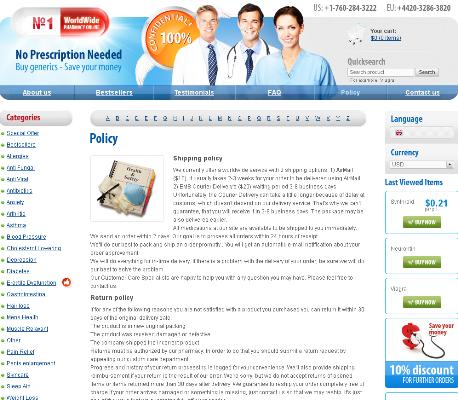How Symbicort Works Differently from Standard Inhalers
Symbicort isn’t just another inhaler—it’s a combination therapy that brings together two powerful medications: a corticosteroid and a long-acting bronchodilator. While most traditional inhalers focus on either quick relief or inflammation control, Symbicort simultaneously targets both airway inflammation and muscle constriction. This dual-action approach helps users breathe easier by reducing swelling inside the lungs and relaxing the airway muscles at the same time.
Traditional inhalers are typically single-action; they either open up the airways quickly with a bronchodilator or fight inflammation with a steroid. Symbicort’s unique mechanism offers both benefits in a single device, streamlining asthma and COPD management for patients.
| Medication | Action | Purpose |
|---|---|---|
| Symbicort | Dual (Steroid & Bronchodilator) | Reduces inflammation & relaxes airways |
| Standard Inhaler | Single (Steroid or Bronchodilator) | Targets either inflammation or airway tightness |
By blending these treatments, Symbicort can simplify routines for those who previously needed multiple inhalers, ultimately making daily respiratory care more convenient and effective.
Comparing the Main Ingredients and Their Effects

When examining the makeup of symbicort compared to traditional inhalers, a few key distinctions immediately stand out. Symbicort combines two active ingredients—budesonide, an inhaled corticosteroid, and formoterol, a long-acting beta-agonist. This dual-action approach not only reduces inflammation in the airways but also offers prolonged bronchodilation to help keep them open.
Traditional inhalers, on the other hand, typically contain either a single ingredient like albuterol, a short-acting beta-agonist, or a standalone corticosteroid. Albuterol is designed for quick, temporary relief of symptoms, acting rapidly but wearing off just as fast, while corticosteroid inhalers focus solely on long-term reduction of airway inflammation.
With symbicort, patients benefit from the immediate opening of airways plus ongoing anti-inflammatory effects. This combination targets both the urgent need for easier breathing and the underlying causes of chronic respiratory problems.
Onset of Relief: What Users Can Expect
When reaching for fast relief during an asthma attack or COPD flare-up, the timing of action is crucial. Traditional rescue inhalers, like albuterol, are designed for rapid onset—they can ease breathing within minutes, making them go-to options for sudden symptoms. Symbicort, on the other hand, combines a corticosteroid with a long-acting bronchodilator, and while it does provide some relatively quick relief thanks to its formoterol component, it is primarily intended for ongoing control rather than immediate rescue.
For patients, this means Symbicort can begin easing symptoms within minutes but isn’t quite as fast as conventional rescue inhalers. Its dual-action formula is especially valuable for those seeking both maintenance and some immediate benefit, though it should not wholly replace a fast-acting inhaler in emergencies. Users typically notice improved breathing stability over continued use.
Side Effects: What Makes Each Option Unique

Many patients notice that Symbicort tends to cause mild throat irritation or hoarseness, while standard inhalers—like albuterol—are more likely to bring about jitteriness or a rapid heartbeat. The reason lies in their distinct formulas: Symbicort combines a corticosteroid and a long-acting bronchodilator, introducing unique risks such as oral thrush if not used properly. Meanwhile, traditional inhalers may prompt quick, short-lived side effects but lack the potential for long-term complications common to combination therapies.
Long-term Control Versus Short-term Symptom Relief
For many patients, distinguishing between immediate relief and ongoing control is crucial to effective asthma or COPD management. Symbicort, thanks to its unique combination of budesonide and formoterol, offers both quick symptom relief and long-term inflammation control. Traditional inhalers, on the other hand, typically fall into two categories: rescue inhalers that provide fast-acting relief, and maintenance inhalers focused strictly on prevention.
Choosing the right inhaler depends on one’s symptoms and treatment goals. While Symbicort can serve as both a controller and, in some cases, a reliever, traditional approaches usually separate these functions. Understanding these differences empowers patients to work closely with their healthcare provider for optimal outcomes.
| Inhaler Type | Primary Benefit | How It's Used |
|---|---|---|
| Symbicort | Control & Relief | Regular use (some as-needed use approved) |
| Traditional Rescue Inhaler | Quick Relief | Used during sudden symptoms |
| Traditional Controller Inhaler | Long-term Control | Daily, routine use only |
Suitability for Different Patients and Conditions
Choosing between Symbicort and traditional inhalers often depends on an individual’s specific diagnosis, severity of symptoms, and lifestyle needs. Symbicort, with its combination of a corticosteroid and a long-acting bronchodilator, is commonly recommended for patients who require both ongoing inflammation control and long-term management of asthma or COPD. It’s particularly suitable for those who face frequent symptoms or experience night-time flare-ups, as it can reduce the need for rescue inhalers.
On the other hand, traditional inhalers—such as short-acting beta-agonists (SABAs)—are typically favored for quick relief during sudden asthma attacks or mild, occasional symptoms. These are ideal for patients who don’t need daily medication or have exercise-induced bronchospasm. Ultimately, a healthcare provider’s assessment helps determine which approach best matches a patient’s health status and treatment goals.



